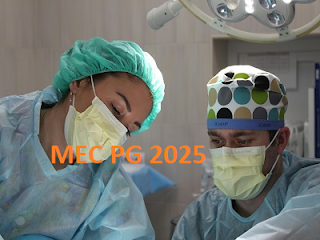CEE MBBS Program Cut-Off Ranks & Scores 2081
BlogCEE MBBS Program Cut-Off Ranks & Scores 2081: Complete Analysis and Admission Insights
Introduction to Nepal's MBBS Admission Process
The Common Entrance Examination (CEE) for MBBS programs in Nepal remains one of the most competitive academic challenges for aspiring medical students. The first matching list for the 2081 batch offers valuable insights into admission trends and college preferences across the country.
This year's data reflects the high level of competition among Nepal's 25 medical colleges. With Maharajgunj Medical Campus (IOM) at the top with a cut-off rank of 380, and Janaki Medical College at the lower end with rank 3560, the disparity highlights the variation in college demand, prestige, and student choice.
Detailed Analysis of Top-Tier Medical Colleges
1. Maharajgunj Medical Campus (IOM), Kathmandu
- Cut-off Rank: 380
- Cut-off Score: 138
As Nepal’s flagship medical institution under Tribhuvan University, IOM continues to set the highest bar. A score of 138 implies approximately 92% accuracy after negative marking, indicating:
- Longstanding academic excellence
- Extensive clinical exposure
- Robust research opportunities and alumni network
2. Patan Academy of Health Sciences (PAHS), Lalitpur
- Cut-off Rank: 419
- Cut-off Score: 136.25
Known for its community-based medical education model, PAHS appeals to students seeking a socially responsive and rural-focused medical training environment.
3. BP Koirala Institute of Health Sciences (BPKIHS), Dharan
- Cut-off Rank: 491
- Cut-off Score: 133.75
BPKIHS stands as the eastern region’s leading medical college. Its slightly lower cut-off suggests:
- Regional preference patterns
- Steady demand for quality education beyond the capital
- Strong clinical training reputation
Mid-Tier Institutions: The Competitive Middle Ground
A large cluster of colleges falls within ranks 500 to 2000, where minor score differences significantly influence college placement:
- Nepal Army Institute of Health Sciences (NAIHS) – Rank: 556 | Score: 131.25
- Kathmandu University School of Medical Sciences (KUMS) – Rank: 691 | Score: 127.25
- Kathmandu Medical College (KMC) – Rank: 1024 | Score: 118.75
The score gap of 6.5 points between BPKIHS and KMC reflects how institutional reputation and location drive competitiveness.
Emerging Trends in Medical Education Preferences
Geographic Distribution Highlights
- Kathmandu Valley: Home to 7 of the top 10 colleges
- Pokhara Region: MAMMS (1241), PAHS-Pokhara (1618) gaining interest
- Terai Belt: NGMC (3174), Janaki (3560) still facing lower demand
Score Differentials and Admission Implications
120–130: Urban private colleges
Below 110: Regional colleges with developing reputation
Strategic Insights for Future MBBS Applicants
1. Score Targeting Strategy
- 140+: Competitive for first-choice colleges
- 135–140: Safe zone for top 3 institutions
- 125–135: Access to mid-tier colleges
- Below 110: Requires careful college selection
2. Preference Order Considerations
- Balance location vs. institutional reputation
- 12–18 months of preparation is ideal
- Have international backup options if possible
3. Shifts in Institutional Appeal
- BPKIHS is closing the gap with Kathmandu colleges
- Madhesh Institute (1664) gaining popularity
- CMCS (1857) maintaining stable demand
Top 5 Institutions: At a Glance
| College | Rank | Score | Trend | Strengths |
|---|---|---|---|---|
| IOM | 380 | 138 | Stable | Research, teaching hospital, TU legacy |
| PAHS | 419 | 136.25 | Rising | Rural focus, innovative curriculum |
| BPKIHS | 491 | 133.75 | Slight dip | Eastern hub, clinical strength |
| NAIHS | 556 | 131.25 | New entry | Military structure, discipline |
| KUMS | 691 | 127.25 | Steady | KU curriculum, practical orientation |
Conclusion: Key Takeaways for Aspiring Students
- Fierce competition: Top colleges demand scores in the 98th percentile
- Strategic preparation is essential for success
- Location still plays a major role in admissions
- Newer colleges are gaining momentum
- Score benchmarks help guide preparation strategy
Appendix: Complete Cut-Off Table (2081)
| S.No | College | Rank | Score |
|---|---|---|---|
| 1 | Maharajgunj Medical Campus | 380 | 138 |
| 2 | Patan Academy | 419 | 136.25 |
| 3 | BPKIHS | 491 | 133.75 |
| 4 | NAIHS | 556 | 131.25 |
| 5 | KUMS | 691 | 127.25 |
| 6 | KMC | 1024 | 118.75 |
| ... | ... | ... | ... |
| 25 | Janaki Medical College | 3560 | 80 |
Use this data to:
- Set realistic and personalized target scores
- Understand competition levels across Nepal
- Strategically select college preferences
- Optimize your preparation path





